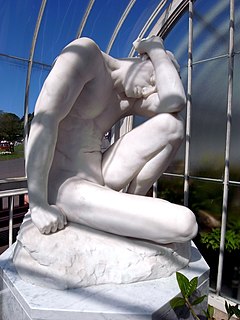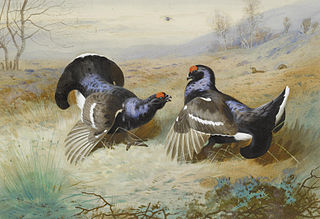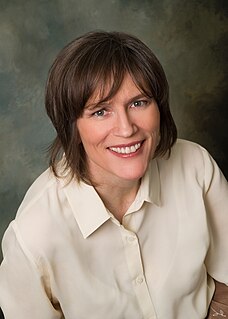
Altruism is the principle and moral practice of concern for the welfare and/or happiness of other human beings or animals, resulting in a quality of life both material and spiritual. It is a traditional virtue in many cultures and a core aspect of various religious and secular worldviews. However, the object(s) of concern vary among cultures and religions. In an extreme case, altruism may become a synonym of selflessness, which is the opposite of selfishness.

Guilt is a moral emotion that occurs when a person believes or realizes—accurately or not—that they have compromised their own standards of conduct or have violated universal moral standards and bear significant responsibility for that violation. Guilt is closely related to the concept of remorse, regret, as well as shame.
Psychological egoism is the view that humans are always motivated by self-interest and selfishness, even in what seem to be acts of altruism. It claims that, when people choose to help others, they do so ultimately because of the personal benefits that they themselves expect to obtain, directly or indirectly, from so doing.

Empathy is the capacity to understand or feel what another person is experiencing from within their frame of reference, that is, the capacity to place oneself in another's position. Definitions of empathy encompass a broad range of social, cognitive, and emotional processes primarily concerned with understanding others. Types of empathy include cognitive empathy, emotional empathy, somatic empathy, and spiritual empathy.

Compassion motivates people to go out of their way to relieve the physical, mental or emotional pains of others and themselves. Compassion is often regarded as being sensitive to the emotional aspects of the suffering of others. When based on notions such as fairness, justice and interdependence, it may be considered rational in nature.

Group selection is a proposed mechanism of evolution in which natural selection acts at the level of the group, instead of at the level of the individual or gene.

George Robert Price was an American population geneticist. Price is often noted for his formulation of the Price equation in 1967.
In biology, altruism refers to behaviour by an individual that increases the fitness of another individual while decreasing the fitness of the agent. Altruism in this sense is different from the philosophical concept of altruism, in which an action would only be called "altruistic" if it was done with the conscious intention of helping another. In the behavioural sense, there is no such requirement. As such, it is not evaluated in moral terms—it is the consequences of an action for reproductive fitness that determine whether the action is considered altruistic, not the intentions, if any, with which the action is performed.

David Sloan Wilson is an American evolutionary biologist and a Distinguished Professor Emeritus of Biological Sciences and Anthropology at Binghamton University. He is a son of author Sloan Wilson, and co-founder of the Evolution Institute, and co-founder of the spinoff nonprofit Prosocial World.

Jean Decety is an American-French neuroscientist specializing in developmental neuroscience, affective neuroscience, and social neuroscience. His research focuses on the psychological and neurobiological mechanisms underpinning social cognition, particularly social decision-making, empathy, moral reasoning, altruism, pro-social behavior, and more generally interpersonal relationships. He is Irving B. Harris Distinguished Service Professor at the University of Chicago.
The concept of the evolution of morality refers to the emergence of human moral behavior over the course of human evolution. Morality can be defined as a system of ideas about right and wrong conduct. In everyday life, morality is typically associated with human behavior rather than animal behavior. The emerging fields of evolutionary biology, and in particular evolutionary psychology, have argued that, despite the complexity of human social behaviors, the precursors of human morality can be traced to the behaviors of many other social animals. Sociobiological explanations of human behavior remain controversial. Social scientists have traditionally viewed morality as a construct, and thus as culturally relative, although others such as Sam Harris argue that there is an objective science of morality.
Humanity is a virtue linked with basic ethics of altruism derived from the human condition. It also symbolises human love and compassion towards each other. Humanity differs from mere justice in that there is a level of altruism towards individuals included in humanity more so than the fairness found in justice. That is, humanity, and the acts of love, altruism, and social intelligence are typically individual strengths while fairness is generally expanded to all. Humanity can be classed as one of six virtues that are consistent across all cultures.
Warm-glow giving is an economic theory describing the emotional reward of giving to others. According to the original warm-glow model developed by James Andreoni, people experience a sense of joy and satisfaction for "doing their part" to help others. This satisfaction - or "warm glow" - represents the selfish pleasure derived from "doing good", regardless of the actual impact of one's generosity. Within the warm-glow framework, people may be "impurely altruistic", meaning they simultaneously maintain both altruistic and egoistic (selfish) motivations for giving. This may be partially due to the fact that "warm glow" sometimes gives people credit for the contributions they make, such as a plaque with their name or a system where they can make donations publicly so other people know the “good” they are doing for the community.
Effective altruism (EA) is a philosophical and social movement that advocates "using evidence and reason to figure out how to benefit others as much as possible, and taking action on that basis". People who pursue the goals of effective altruism are labeled effective altruists.

Barbara Ann Oakley is an American professor of engineering at Oakland University and McMaster University whose online courses on learning are some of the most popular MOOC classes in the world. She is involved in multiple areas of research, ranging from STEM education, to learning practices.
Reciprocal altruism in humans refers to an individual behavior that gives benefit conditionally upon receiving a returned benefit, which draws on the economic concept – ″gains in trade″. Human reciprocal altruism would include the following behaviors : helping patients, the wounded, and the others when they are in crisis; sharing food, implement, knowledge.
Moral emotions are a variety of social emotion that are involved in forming and communicating moral judgments and decisions, and in motivating behavioral responses to one's own and others' moral behavior.

The End of Animal Farming: How Scientists, Entrepreneurs, and Activists Are Building an Animal-Free Food System is a 2018 book by Jacy Reese that argues animal farming will end by the year 2100 based on effective altruism reasoning and social movement strategy.

Against Empathy: The Case for Rational Compassion is a 2016 book written by psychologist Paul Bloom. The book draws on the distinctions between empathy, compassion, and moral decision making. Bloom argues that empathy is not the solution to problems that divide people and is a poor guide for decision making. However, he is not completely against empathy; he believes that empathy can motivate kindness to make the world a better place.
Abigail Marsh is a psychologist and neuroscientist who works as a professor at Georgetown University's Department of Psychology and the Interdisciplinary Neuroscience Program, where she is the director of the Laboratory on Social and Affective Neuroscience.










